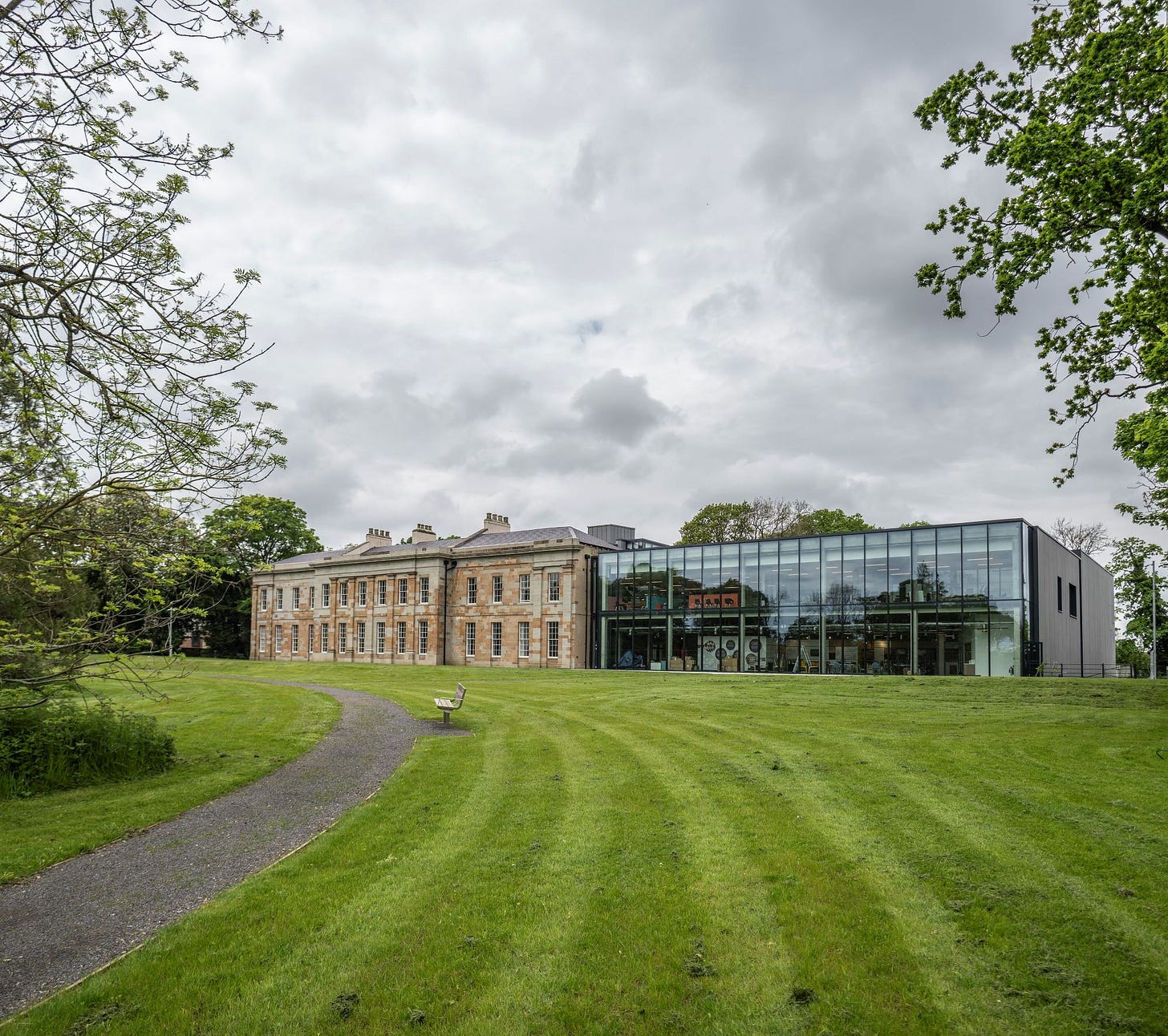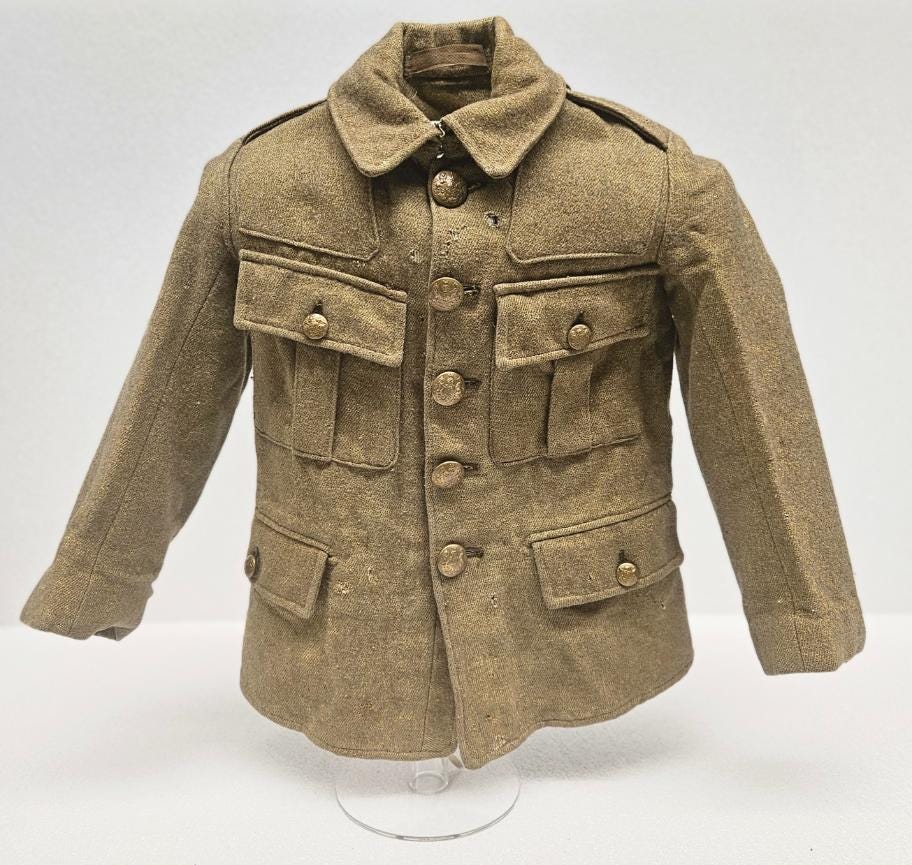An artwork to stand the test of time
An engraved panel created by a Durham blacksmith will be sealed in revamped building as a time capsule. Tony Henderson reports

An artwork will double as a time capsule at the heart of the DLI Museum and Art Gallery which is currently being redeveloped.
Durham County Council commissioned local blacksmith artist Graeme Hopper to emboss an inscription on to a steel plate, which will form part of the new structural framework of the cultural attraction at Aykley Heads, near Durham City.
The engraving reads: ‘Bravery runs through our history; courage sparks new ideas’.
It is inspired by the building’s past, but also its future an exhibition space and creative hub, where new ideas are explored.
Work to redevelop and extend the building – which closed in 2016 - started earlier this year and is currently focused on upgrading the existing concrete structure to ensure it is suitable for a modern, energy efficient, public venue.
Read more: Review - Alice in Wonderland at People’s Theatre
The engraved steel panel will be one of a number installed over voids originally formed for rainwater piping and utilities. Only visible for a short time, the artwork will then be encased within the building.
An identical artwork, also created by Graeme, will be displayed as part of the completed project to acknowledge the venue’s vision to be a cultural centre for the county.
Coun Amanda Hopgood, leader of Durham County Council, who with Coun Elizabeth Scott, Cabinet member for economy and partnerships, bolted the first steel plate in place, said: “We have reached an important stage in the work to not only give new life to the DLI Museum and Art Gallery, but to also make it fit for generations to come.
“We wanted to do something meaningful to mark the milestone and acknowledge that the building holds a special place in many people’s hearts. The artwork pays homage to the past, while also expressing the need to look forward.
“In the heart of the building, it symbolises new beginnings and how the past can be a springboard for innovation and creative endeavours.”
Graeme said: “It’s an honour and a privilege to be asked to be involved in this exciting new venture for County Durham. I’ve always been a creative person and I love to share my passion for making things with others. I hope this new venue inspires other people to explore their own creativity.”
Located in the Durham Innovation District, it is hoped that the new venue will become a significant draw for residents and visitors, sited within a parkland setting near the city’s mainline railway station.
The project has received support from Arts Council England’s Capital Investment Programme.
Read more: North East photographs captured for Tate exhibition
It will display key DLI items but the bulk of the main collection will remain housed at The Story, located in Mount Oswald House on the outskirts of Durham City,
The Story contains five historic collections, including six miles of archives covering 900 years of history and the entire DLI Collection and Archive.
One poignant items from the collection is a child-sized First World War military jacket on display in a current exhibition, Welcome to our County: The Children of Yesterday and Tomorrow.
When Lieut. Colonel Gerard Chipchase Roberts, of Hamsterley in County Durham left in 1915 to serve in the war, his wife Winifred bought their three-year-old son Gerard Brian Chipchase Roberts a tiny military uniform to match that of his father.
Lieut. Col. Roberts was killed in action aged 42 in 1916 near Neuve Chapelle and was buried in a military cemetery in the Nord du Pas-Calais in France.
His son became a captain in the Durham Light Infantry and he was killed in action in the Second World War, aged 28, in the same area where his father had died.
Father and son are buried just 10 miles apart.
Lieut. Col Roberts’s brother, Frederick John Roberts, was also killed in France in 1915, aged 36.
Created by Durham Youth Council, the exhibition will be on display until next spring. Drawing on objects and documents from The Story’s extensive collections, the exhibition focuses on the lives of children throughout history.
It also reveals the workhouse woes of four sisters. Jane Elizabeth, Clara, Rachael, and Alice Gribbon who were admitted to the Sedgefield Union Workhouse in July 1891 when their father Arthur was sent to prison. He had previously worked as a miner.
Their mother, Mary Ann, had died after Alice was born.
Because there were no other family members who could look after them, the girls entered workhouse life and were sent into domestic service with well-off families.
The sisters were sent in and out of service and care homes for most of their young lives due to alleged ‘bad’ behaviour, which suggests they did not like being separated from each other.
One of the exhibits is a report, dated 1902, to the chairman and guardians of the Sedgefield Union workhouse.
It discusses the future of Rachael who is said to have been taken out of the workhouse by her presumably older sister and placed in service, but there were moves to readmit her.
Photographs in the display also show traveller caravans in Queen Street Square, Spennymoor, in October 1928. In one picture a large group of children among the caravans are gathered around a cooking stove.



